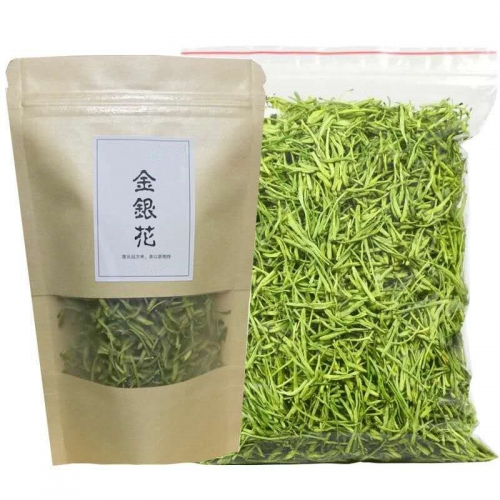On Sale Super Chinese Schisandra Berries Chinese Tea Wu Wei Zi Tea
Origin Place:Yunnan,Chinese
Harvest Time: Early Spring 2023
Crafting: Hand-made.
Net Weight: 250g per bag.
Storage time:18months
Instruction:
Schisandra chinensis is a woody vine which bears numerous clusters of tiny, bright red berries. The vine is typically of height 15 to 25 feet and width 5 to 10 feet. It flowers from April to May, with flowers of diameter about 1 inch.
The plant is found throughout northern and north-east China (especially in Jilin, Lianoning, Heilongliang and Hebei) and the adjacent regions of Russia and Korea. The fully ripe, sun-dried fruit is used medicinally. It has a mixture of sour, sweet, salty, hot, and bitter tastes. This unusual combination of flavors is reflected in its Chinese name wu-wei-zi, meaning "five-taste fruit". Other names of Schisandra are "Schisandra", "Wu-wei-zi", "Schisandra japonica", "Maximowiczia chinensis" and "Kadsura chinensis".
Schisandra chinensis is a plant which bears fruit containing one or more naturally-occurring adaptogens, which have been shown to maintain the body's systemic tonicity and balance, improve concentration and attention-span, and increase acuity of vision and hearing. Schisandra is one of the most effective phytoadaptogen.
ADAPTOGENS are natural plant products that increase the body's ability to cope with internal and external stress factors, and normalise the functions of the body. They help maintain the stable internal environment inside the body known as homeostasis. An important characteristic is that they are safe, possessing few known side-effects
History
The classical treatise on Chinese herbal medicine, the Shen Nung Pen Tsao Ching, describes schisandra as a high-grade herbal drug useful for a wide variety of medical conditions - especially as a kidney tonic and lung astringent. Chinese herbalists use schisandra for coughs, night sweats, insomnia, thirst, and physical exhaustion. Scientific research carried out in Russia from the 1940s to the present has confirmed the medical efficacy of schisandra chinensis for use in different conditions, and has also revealed its chemical composition and mechanisms of action.
How it works
Schisandra contains essential oils, acids and lignans which can, for example, help to regenerate liver tissue damaged by alcohol abuse or by hepatitis. One identified group of active ingredients is dibenzo-cyclo-octadiene lignans (1), which appear to possess therapeutic potential against oxidative neuronal damage induced by excitotoxins in the brain.
The herb's adaptogenic action may help improve physical and mental performance, relieve fatigue and build strength. Studies have shown that schisandra is effective against the bacteria connected with lung disorders. This herb promotes oxygen-supply for the cells, potentiates the body's immune system, and protects against stress. Probably thanks in part to its beneficial effects on blood-circulation, it is also said to improve sexual performance, both increasing the man's staying power and stimulating sensitivity in the female genitals.
Dosage and Administration:
It is recommended and safe to consume around 1.5g to 6 g a day. Generally, the dried berries are boiled in water and consumed as tea. The ancient Chinese regarded this tea as the tea to retrieve one vernal vigor.
Main properties of schisandra chinensis
*Increases physical and mental performance
*Increases acuity of vision and hearing
*Decreases eye fatigue in tasks requiring extended visual concentration
*Improves concentration and attention
*Increases physical and mental performance
*Restores strength after severe and prolonged exertion, and in convalescence from disea
























